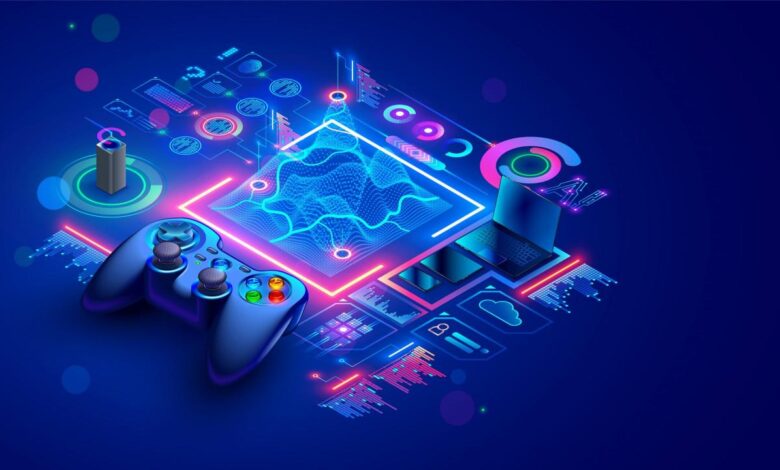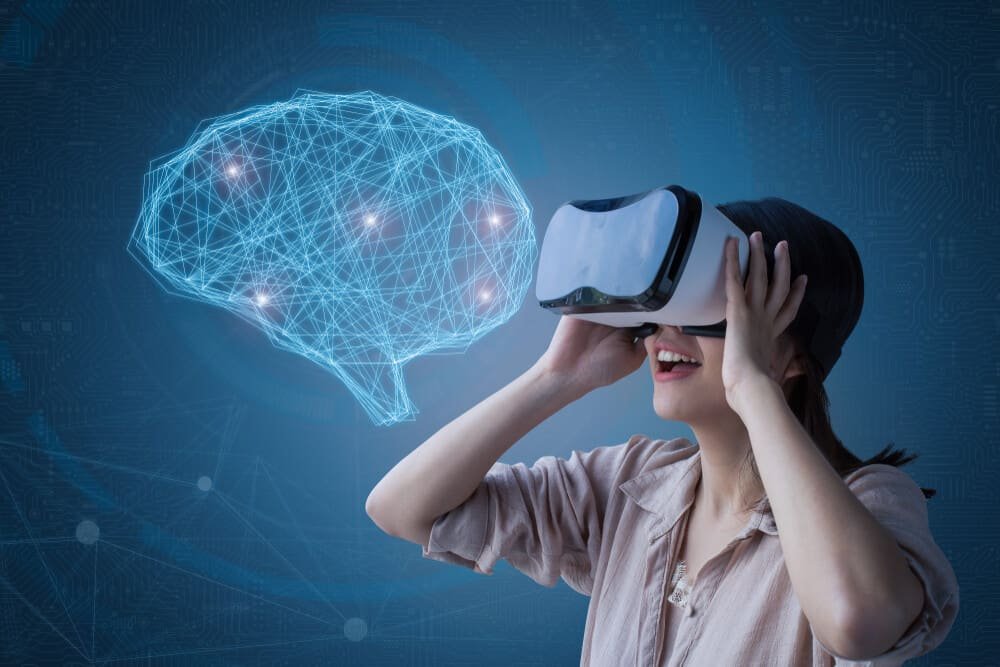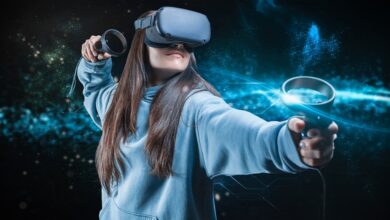AI Revolution in Gaming Gives Excellent Player Interaction

The world of video games is no longer just a static, pre-programmed experience. A quiet revolution is underway, driven by the strategic integration of artificial intelligence (AI). What was once a simple tool for controlling non-player characters (NPCs) is now a fundamental force that is reshaping game design, player interaction, and the very concept of interactive entertainment. This isn’t just about smarter enemies; it’s about AI creating dynamic narratives, generating entire game worlds, and personalizing the player experience in a way that was once unimaginable. This article will take a deep dive into the core concepts of the AI revolution in gaming, exploring the groundbreaking applications that are pushing the boundaries of creativity, the challenges that still need to be addressed, and the immense opportunities that lie ahead for a more intelligent and responsive future.
Beyond Simple Scripts

For decades, AI in games was a rudimentary system of rules and scripts. A villain would follow a pre-determined path, a companion would offer a canned response, and a game world would be a static environment. The new era of AI in gaming is defined by a profound shift from a rigid, rules-based system to a dynamic, learning-based one.
A. The New Brains of the Game
The most visible change is in the intelligence of non-player characters. AI-powered NPCs are becoming more lifelike, responsive, and unpredictable.
- Behavioral Trees: Instead of simple scripts, developers are now using a more complex system called “behavioral trees.” This allows an AI to make more sophisticated decisions based on a wide range of factors, such as the player’s actions, the environment, and the game’s state. A simple enemy can now dynamically choose whether to attack, retreat, or call for reinforcements based on the situation.
- Reinforcement Learning: AI is being trained to learn from its mistakes and to improve its performance over time. A game’s AI can play thousands of matches against itself, learning the most effective strategies and tactics, and then apply that knowledge in a match against a human player. This creates a new level of challenge and a more authentic and rewarding experience for the player.
- Memory and Personalization: The latest games feature AI that can remember a player’s past actions and interactions. An NPC can remember a kindness or a betrayal, and their behavior towards the player can change based on that memory. This creates a more personalized and dynamic narrative, with a game world that feels more alive and responsive to the player’s choices.
This new level of intelligence in NPCs is blurring the line between a pre-programmed script and a real, living character.
B. Generative AI
Perhaps the most significant and disruptive change is the use of generative AI to create a game’s content. This is a profound shift from a developer-driven creation model to a more collaborative one.
- Procedural Content Generation (PCG): While PCG has been used for years to generate simple landscapes, generative AI is taking it to the next level. AI can now generate entire game worlds, complete with unique landscapes, a dynamic ecosystem, and a set of unique quests and storylines. This allows for massive, ever-evolving worlds that never feel repetitive or static.
- Dynamic Storytelling: Generative AI can dynamically alter a game’s narrative based on a player’s choices and actions. A game’s AI can analyze a player’s behavior and then create a new storyline, with new characters and new plot points, that is tailored to their unique play style.
- AI-Powered Art and Audio: AI is being used to generate a game’s art and audio. It can create new textures, 3D models, and a dynamic soundtrack that responds to a player’s actions in real-time. This is a game-changer for independent developers who may not have the budget for a large team of artists and composers.
The New Player Experience

AI is not just about making a game’s world more realistic; it’s about creating a more personalized and interactive experience for the player.
A. The Intelligent Tutor
AI can act as a personalized tutor for a player. It can analyze a player’s skills and weaknesses and then provide a personalized training regimen to help them improve. For example, if a player is struggling with a particular part of a game, the AI can provide a series of targeted exercises and tips to help them master it. This is a powerful shift from a one-size-fits-all tutorial to a more personalized and effective one.
B. Personalized Difficulty
AI can now dynamically adjust a game’s difficulty in real-time to match a player’s skill level. If a player is struggling, the AI can reduce the difficulty, and if a player is mastering the game, the AI can increase the difficulty to provide a continuous challenge. This ensures that every player has a rewarding and engaging experience, regardless of their skill level.
C. The New Social Hub
AI is being used to create a more social and welcoming gaming community. AI-powered tools can moderate a game’s community, identifying and removing toxic players and creating a more positive and inclusive environment for everyone. This is a much-needed change in an industry that has long struggled with online toxicity.
Challenges and Opportunities
While the future of AI in gaming is bright, there are significant challenges that must be addressed to ensure that this revolution is inclusive and sustainable.
A. The Ethical Use of AI
The power of AI in game development raises a number of ethical questions.
- Algorithmic Bias: The data used to train a game’s AI can contain biases. For example, if a game’s AI is trained on a dataset of human players who exhibit a certain type of behavior, it can perpetuate that bias, leading to an unfair or unrewarding experience for a player who does not conform to that behavior.
- The “Black Box” Problem: The decision-making process of an AI can be a “black box,” making it difficult for a developer or a player to understand why a specific action was taken. This needs to be addressed through transparent and auditable AI systems.
- Intellectual Property and Copyright: The use of generative AI to create a game’s content raises complex legal and ethical questions about intellectual property. Who owns the content that is generated by an AI? Do the original creators of the training data have a right to be compensated?
B. The Challenge of Implementation
The integration of AI into a game’s engine is a complex and expensive process. It requires a new set of skills and a significant investment in hardware and software. The industry will need to work together to create a common set of tools and platforms to make AI more accessible for all developers, from a small indie team to a massive studio.
C. The Human Element
While AI can automate a wide range of tasks, it cannot replace the human element of creativity, empathy, and passion that makes a game truly special. The future of game development will be a collaboration between human creators and AI, with AI acting as a partner and a tool for a more efficient and creative process.
Conclusion
The AI revolution in gaming is a transformative force that is fundamentally reshaping how we design, play, and experience interactive entertainment. What began as a simple tool for controlling non-player characters has evolved into a powerful and versatile force that is enabling a new level of dynamic narratives, personalized experiences, and realistic game worlds. The use of generative AI is a game-changer for game developers, providing them with a new creative partner that can generate everything from a unique quest to an entire open world. The new level of intelligence in NPCs is creating a more authentic and rewarding experience for the player, and the use of AI for personalized tutorials and dynamic difficulty is ensuring that every player has a rewarding and engaging experience, regardless of their skill level.
However, as we embrace this new era, we must also confront the significant challenges that lie ahead. The ethical use of AI, the need for transparent and auditable systems, and the complex legal questions about intellectual property are all issues that demand a new level of responsibility from the gaming industry. The future of AI in gaming is not about AI replacing humans; it is about a new collaboration between human creativity and machine intelligence. The AI revolution in gaming is a journey, and its ultimate success will be measured by its ability to create a world that is not only more intelligent and more responsive but also more human-centric, more inclusive, and more creative for everyone.









